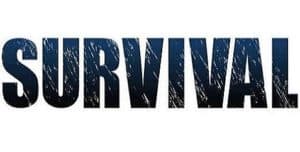How the World Breaks: Life in Catastrophe’s path, from the Caribbean to Siberia
The age of “natural” disasters as we know it may be coming to a close. Where we once saw spontaneous destruction from hurricanes, tornadoes, fires, earthquakes, floods, and so on… we are coming to understand the deeper connections between our choices and our environmental catastrophes. However, in spite of this knowledge, the wreckage is piling higher each year.
Just when we should be rushing to act against basic causes – the hijack of the atmosphere, the inequalities of risk – a strange and dangerous optimism has taken hold. It says that communities under threat simply need to learn the art of resilience, to adapt, and to survive. To make such a prescription is to deny the human hand in disaster creation and to demand that the Earth’s most hard-pressed people absorb the rush of floodwaters and the crush of landslides so disaster can become just another sector of the economy.
In How the World Breaks, the author(s) question the current trends of thinking about disasters and resilience by taking it out of the realms of theory into the muck and ash of the world’s broken places. From the people living in the path of destruction, they learn that change is more than just adaptation and life is more than just survival.
This is definitely a book that will give you incentive to be prepared for anything. It is certainly an eye-opening read.
Obviously each individual will have to take into consideration where you live and what disaster is more or less likely to strike there. Only you know what situations are most probable in your area. However, there are certain precautions and preparedness that basically everyone should take, no matter where you live!
You may want to invest in a bunker or survival pod in extreme cases, and if you have the budget. But for most people you should, at the very minimum, get at least one survival kit for your home or office, and an emergency car kit for your vehicle(s). For emergency shelter, in case of your home being destroyed or unable to get there, you may want to invest in a survival tent to keep in your car or store in another location away from your house.
Don’t forget about storing important documents in a safe place that you can grab & go. Make sure you have plenty of food stocked up and a water supply producing at all times.
Of course you need to have a home defense plan in place, tools for various tasks, and you should always have a survival knife handy for all sorts of reasons.
This is not to say there aren’t other items you will need or some you might not. There are far too many unknowns for anyone to give specifics, but you should at least have a good base of emergency items that anyone might need, as well as some specific items that you might need in particular based on your location and the likelihood of what might happen in that area.
Exploring Catastrophe and Resilience: A Review of “How the World Breaks”
In a world increasingly shaped by climate change, environmental crises, and natural disasters, understanding the intricate interplay between humanity and the environment is more crucial than ever. “How the World Breaks: Life in Catastrophe’s Path, from the Caribbean to Siberia” by Stan Cox and Paul Cox provides a compelling and insightful lens through which to view these pressing issues.
A Global Expedition of Catastrophe: This book takes readers on a captivating journey across the globe, offering a comprehensive perspective on the impact of disasters, both natural and human-induced. From the hurricane-battered Caribbean to the wildfire-stricken American West, the oil-scarred Niger Delta to the permafrost-thawing frontiers of Siberia, the authors explore the ecological, social, and ethical dimensions of these catastrophes.
The Ecological Consequences: Throughout How the World Breaks, the ecological aftermath of disasters takes center stage. The authors vividly depict how hurricanes disrupt fragile island ecosystems, wildfires ravage forests, oil spills devastate wetlands, and permafrost thaw destabilizes Arctic landscapes. It becomes clear that disasters are not isolated events; they ripple through ecosystems, highlighting the delicate balance of the natural world.
Social Inequalities and Resilience: The book doesn’t stop at ecological impacts; it delves into the societal consequences of disasters. It unveils the stark inequalities that persist, with marginalized communities often bearing the heaviest burdens. However, it also celebrates resilience, showcasing how individuals and communities adapt, innovate, and rebuild their lives in the wake of catastrophe. Their stories serve as powerful reminders of the willful human spirit.
Climate Change and Environmental Ethics: How the World Breaks connects the dots between disasters and climate change, emphasizing the role of global environmental challenges in intensifying calamities. It also challenges readers to ponder the ethical responsibility of humanity in the face of environmental degradation. It’s a call to reflect on the ethical dimensions of our actions and decisions, sparking a dialogue about responsible stewardship of the planet.
A Call to Action: Beyond its exploration of catastrophe and resilience, the book serves as a call to action. It inspires hope by showcasing how communities come together to address challenges and rebuild. It invites readers to engage with the world’s most pressing issues and become part of the solution.
In a world where environmental concerns are at the forefront of global discourse, “How the World Breaks” offers a timely and thought-provoking perspective. It’s a book for those who seek a deeper understanding of the complex web of factors shaping our world, and for anyone who believes in the power of resilience and collective action in the face of adversity.
This book reminds us that while the world may “break” it is also capable of healing and renewal, and it encourages us all to play a role in shaping a more sustainable and equitable future.
